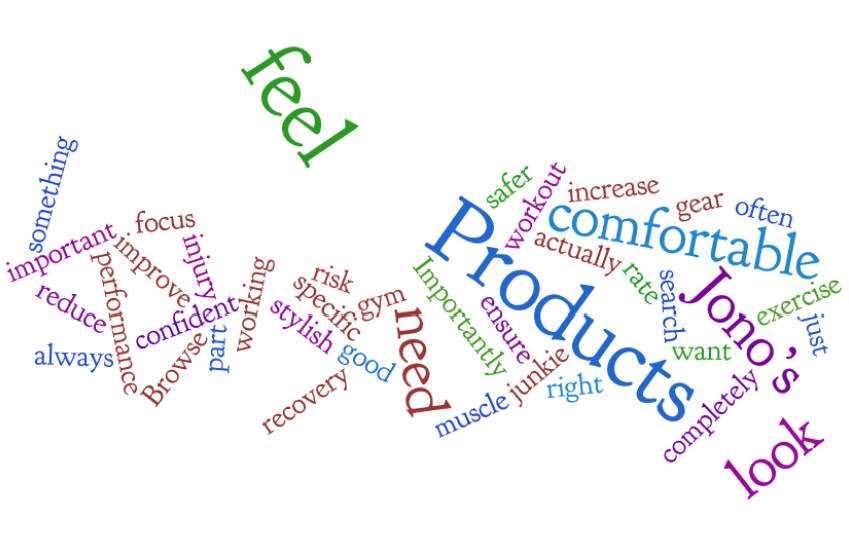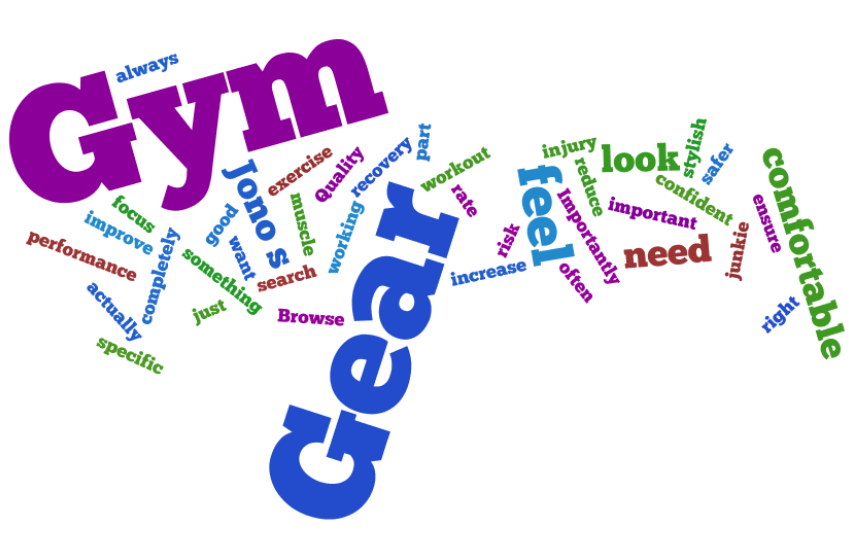SEO copywriting best practices
April 28, 2018 • Glenn Murray

Now that you’re familiar with what SEO copy is, it’s time for us to see how you can nail the SEO copywriting.
When you’re writing SEO copy, it’s the ‘copy’ part — the part for visitors — that’s most important. After all, visitors buy; search engines don’t.
But there’s another reason too. It’s not discussed as often, but it’s just as important if you’re after a high ranking. A reason that makes quality even more important in SEO copy than in other forms of copy.
That reason? In SEO copy, you’re not just trying to persuade readers to buy your product or service, you’re trying to persuade them to link to you too. Inbound links tell Google your site is good, so they’re critical to a high ranking. But no-one will link to you without a good reason. Paying for links is expensive (and against Google’s rules), so if you want people to link to you, you have to write great content. They have to know that if they link to you, they’ll be helping their readers.
Write for visitors first
So the golden rule of all SEO copywriting is to always write for visitors first. Forget the search engines altogether, until you’re satisfied your content is engaging and compelling to its target audience(s).
(That said, you should think about search engines before you write too — when deciding what pages to write. But once you actually start writing, you should forget the search engines until you’re happy with your content. But more on this a little further on…)
Then optimize your copy
Once you’re satisfied your copy conveys the right messages and that it’s appropriately persuasive, you can optimize it for search.
As discussed above, this means:
- Using your key-phrases relatively frequently;
- Using them in the right places (particularly headings, lists, links and bold text); and
- Using words that are semantically related to your key phrase (e.g. related words, similar words, parts, stems, grammatical variants).
Sounds simple enough, doesn’t it? Only three steps, after all! Alas, it isn’t simple.
When you actually get down to it, the same sticky situations tend to arise, again and again. And they’re all caused by one thing: the conflict between what (you think) Google wants, and what your reader wants.
Go to this post which is dedicated to discussing and resolving those sticky conflict situations. All practical guidance with realistic sorts of examples. But before we launch into that discussion, you should familiarize yourself with a few of the clever little techniques SEO copywriters use many, many times every day. Think of them as the SEO copywriter’s virtual Swiss Army Knife.
Once you’re familiar with these tricks, you’ll find the discussion about the sticky conflict situations much easier to deal with.
Forget keyword density!
Keyword density is responsible for more heartache to SEO copywriters than any other single problem. (I’m sure it’s responsible for a few of my own gray hairs.) But it shouldn’t be. Google isn’t at all interested in keyword density. In fact, it doesn’t even measure it. Apparently keyword density was used in information retrieval (IR) back in the 1950s & 60s, but it’s not used now at all.
For what it’s worth, keyword density is a measure of the number of times you’ve used your key phrase, relative to the total number of words on your page, expressed as a percentage. E.g. If your page has 200 words, and you’ve used your keyword phrase 6 times, its keyword density is 3% (6/200 x 100).
The reason keyword density is still such a popular concept is that it’s quantifiable, relative and understandable. SEO practitioners grasped it, and many refused to let go.
But it’s dangerous. Most people who use keyword density place way too much emphasis on achieving a particular density (e.g. 3%-10%) — usually high — without any real regard to how that density impedes readability.
Having a high keyword density won’t necessarily help you. In fact, if it’s too high, Google may think you’re a spammer, and penalize you. Worse, visitors will be put off if you use your keywords too liberally. They’ll find your copy hard to read, and if they know anything about SEO, they’ll assume you’re a spammer.
Forget keyword density. Instead, measure your keyword frequency (discussed below).
Measure keyword frequency
Use a phrase counter if you’re targeting an EXACT phrase*
One of the best tool for measuring key phrase frequency when you’re targeting an exact phrase is the WrtierWords. It’ll tell you exactly how many times you’ve used your key-phrase, and how many times you’ve used other phrases.
E.g. Here are 3 most frequently used phrases in my launch post for the Problogger Scorecard ebook.

As you can see, the most frequent phrase is “copywriting scorecard for bloggers”, which is exactly what I wanted that post to rank for. In other words, I’ve optimized well.
* More on targeting the exact phrase or parts of the phrase.
Use a word cloud if you’re NOT targeting an EXACT phrase*
If you’re targeting the words of the phrase in any order, the simplest tool to use is the Wordle word cloud generator. If you’ve used your key-phrases frequently enough, the individual words of those phrases will be prominent in the cloud.
E.g. When I generate a word cloud from my launch post for the Problogger Scorecard ebook, it looks like this:

Word cloud generated from the copy of my launch post for the Problogger Scorecard ebook
As you can see, the individual meaning words that make up my target phrase “copywriting”, “scorecard” and “bloggers” are among the most prominent in the cloud. This means I’ve used them more than any other single word (ignoring words like “if” and “the” etc.). In other words, I’ve once again optimized well.
And don’t worry if your keywords aren’t the most frequent words on every page. Just try to ensure they are on most pages.
* More on targeting the exact phrase or parts of the phrase.
TIP: If you’ve structured your site correctly, you’ll have a cluster of pages optimized for each keyword phrase, and you can always make up the difference on the other pages in the cluster. (See Dedicate a cluster of pages to each keyword for more information on clustering.)
Target one keyword per page
If you’re targeting quite specific key-phrases in your copy, you’ll find it difficult to aggressively target more than one per page. You can target a few extras (maybe related words), but usually only incidentally.
For example, let’s say you want your tennis clothing page to rank well when for the following searches:
- “blue tennis shoes California”
- “green tennis skirts West Coast”
- “purple tennis hats”
- “fastest tennis shoes world”
Let’s also assume 400 words per page.
Now, if you try to optimize your web copy for all of these phrases, you’ll find that it becomes very difficult to read. You’d need to include all of the words from each of the above phrases around 5-10 times. That would mean up to half the copy on your page would be keywords!
The best way around this is to create additional pages — to build a ‘cluster’ of pages around each key-phrase.
Dedicate a cluster of pages to each keyword
Continuing with the tennis example above, you’d have a cluster of pages for “blue tennis shoes California”, another cluster of pages for “green tennis skirts West Coast”, another for “purple tennis hats”, and so on. This way, only around 10% of your copy would be dedicated to keywords. This results in much more readable, natural-looking pages.
And in this particular example, it would also result in a much more logically structured site; a well structured site typically wouldn’t discuss all of the above items on the same page.
IMPORTANT: You must also consider your message, not just your keywords, when you structure your website. If you structure your website without thought to the content, you’ll end up trying to squeeze the copy into an inappropriate structure.
For more information on clustering, watch me strut my stuff in this high-definition video blog post: Choosing keywords & theming your site – An example.
Be specific
When you actually sit down and try to write some SEO copy, you’ll see that it’s not always easy to include your keywords more often than any other single word or phrase. At least to begin with.
The easiest way to do it is to be specific. As you write every sentence, ask yourself, “Could I be more specific?” For example, if you sell cheap second hand computers, don’t just say “our computers” or “our products”; ask yourself if you can get away with saying “our cheap second hand computers”.
Similarly, don’t say things like “with our help”; instead, say “with the help of our cheap second hand computers”. Once you get the hang of it, you’ll find there are many opportunities to replace generic wording with your keyword phrase.
Example: Following is some un-optimized copy for the Products page of a hypothetical ecommerce website.
Jono’s Products
If you’re a gym junkie, you need the right gear. You want to look good and feel comfortable. So when you’re working out, you feel completely confident, and can focus on what’s important: your workout.
Jono’s has just what you need. Our stylish, comfortable products will ensure you always look and feel the part.
Importantly, they’ll actually improve your performance too. They reduce the risk of injury, and increase the rate of muscle recovery, so you can exercise safer and more often.
Browse our products below, or search for something specific.
You know what this site sells, right? Gym gear. But does Google know that? By generating a word cloud from this copy, we’ll get a simplistic idea of what Google understands of this page:

Word cloud generated from un-optimized gym gear page
As you can see, the un-optimized copy doesn’t tell Google much. From the copy alone, Google might think the page is about products, feelings, need, comfort and Jono (you’ll note these are the most prominent words in the cloud).
But by being specific, we can easily turn this around (I’ve highlighted my changes):
Jono’s Gym Gear
If you’re a gym junkie, you need the right gym gear. You want to look good and feel comfortable. So when you’re working out, you feel completely confident, and can focus on what’s important: your workout — not your gym gear.
Jono’s has just the gym gear you need. Our stylish, comfortable gym gear will ensure you always look and feel the part.
Importantly, our gym gear will actually improve your performance too. Quality gym gear can reduce the risk of injury, and increase the rate of muscle recovery, so you can exercise safer and more often.
Browse our gym gear below, or search for something specific.
Now let’s take a look at the word cloud generated from the optimized copy:

Word cloud generated from optimized gym gear page
That’s better! Now, when Google reads the copy, it will have no doubts about the subject matter of the page. This means it’ll be much more likely to index the page appropriately and accurately determine its relevance to search queries.
Obviously, there’s a bit of an art to it; sometimes it ends up sounding like you’re repeating your keyword phrase over and over again. If this happens, you may just need to restructure the sentence or paragraph. Always remember: your site reflects the quality of your product or service. If your site is hard to read, people will infer a lot about your offering…
Invent headings, captions and lists
Google loves headings, captions and lists. When indexing your page and determining your relevance, it pays particular attention to the words you use in these elements. So they’re good places to use your target key-phrases.
Fortunately, readers love headings, captions and lists, too. So if you’re struggling to increase your keyword frequency, why not just invent a couple of extra headings, just to accommodate your keywords? Or throw in a new image and associated caption? Or a new bulleted list? So long as you’re adding value to your reader (or at the very least, you’re not reducing value), you can use headings, captions and lists quite liberally.
Although these elements are technically within the body copy, they’re somewhat removed from the flow of the body copy. (i.e. Many readers will scan them — or completely skip them — when reading your page, from start to finish.) This makes them particularly easy to optimize without impeding readability.
TIP: You can even make extra use of your invented captions and lists, by adding keyword-rich links to them.
Use grammar & punctuation…‘creatively’
Grammar and punctuation are your friends. Honest. They are, after all, the literal difference between a long and boring block of text, and a great read.
Let’s start with punctuation, as it’s the easiest to be creative with. Assume you’re targeting a key phrase like “office stationery west gosford”. The problem with this phrase is that the words don’t sit together nicely as part of any meaningful sentence. (Not without punctuation, anyway.) The temptation is to add words around and between the individual keywords, but this simply makes your key-phrase dominate your page even more (it eats into the wordcount you might otherwise assign to meaning and persuasion).
By using punctuation creatively, you eliminate the need for padding words. In this example, you can actually make the phrase read properly as part of a meaningful sentence, without changing the word order or adding any extra words.
Example: A heading might read: “ACME office stationery, West Gosford” or “Want office stationery? West Gosford is the place.” Note that the phrase “office stationery west gosford” appears in both of these examples, with its original word-order, and without any additional words — only the insertion of a punctuation mark.
You can also use grammar creatively, in a similar way.
Example: Using the same target key-phrase, you might write a sentence in your body copy like:“All Central Coast businesses need office stationery; West Gosford is no exception.” (This is grammatically incorrect because it implies that West Gosford is a Central Coast business.) Alternatively, you might insert a map of your business location, and accompany it with a caption (and image Alt attribute) like, “Office stationery — West Gosford ACME store”. (This isn’t a grammatically complete sentence.)
Fortunately, people don’t expect headings and captions to always be grammatically correct. They expect them to be scannable and succinct.
Link out for SEO and credibility
Helpful websites build brand credibility, authority and trust. But readers don’t expect you to know everything. Nor do they expect your website to provide all the answers, or cover all possible related subject matter. If you think your readers will want to know something, but it’s outside your scope or your realm of expertise, link to another site that covers it properly.
A link to a helpful site is a positive reflection on you and your site. Your readers will remember your site was helpful, even if you didn’t provide the ultimate answer; you still pointed them in the right direction. As a result, they’ll quite likely return and maybe even bookmark your site, using a social bookmarking service like Delicious (see my SEO Secrets ebook for more on social bookmarking and SEO). They’ll also respect you for sharing the link, and not trying to horde visitors — at the expense of helpfulness.
From an SEO perspective, linking out can actually be helpful too. If the anchor text of your link is keyword rich, you’ll be helping Google understand your subject matter and relevance. Outbound links are particularly beneficial when they point to ‘hub sites’ — the really, REALLY big and trusted ones in your field. If you link to a hub site, the search engines figure you’re adding value to your visitors, and this may count in your favor.
Google’s head of spam, Matt Cutts, hints at this:
“…if the user is happy, they are more likely to come back or bookmark your site or tell their friends about it. And so, if you try to hoard those users, they often somehow subconsciously sense it, and they are less likely to come back or tell their friends about it.”
Translation? Outbound links can impact your ranking favorably. (When discussing ranking factors, Matt usually talks in terms of visitor experience.)
That being said, it’s common that there are conflicts when dealing with what Google wants and what visitor wants in your copy. Here is a dedicated post on resolving common Google-Visitor conflicts, where I use practical examples to show you how to strike the balance.

